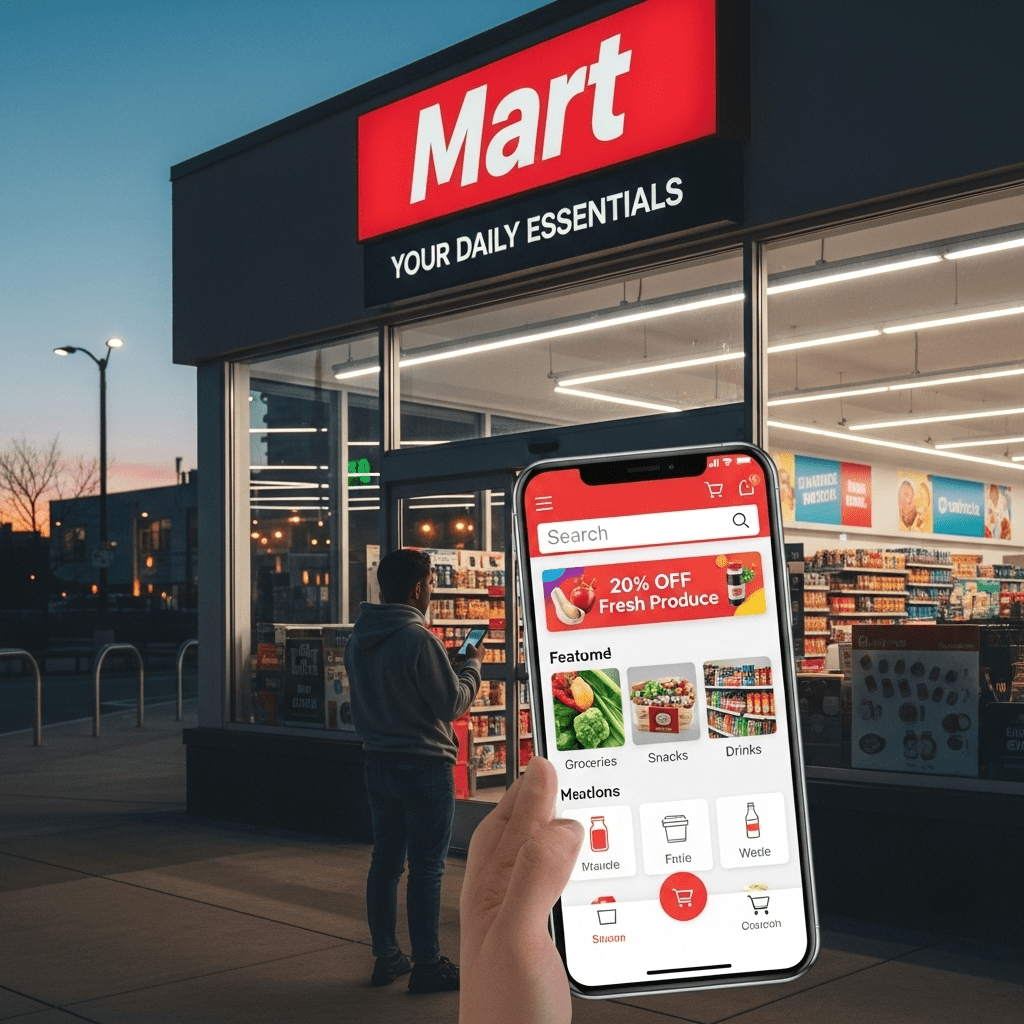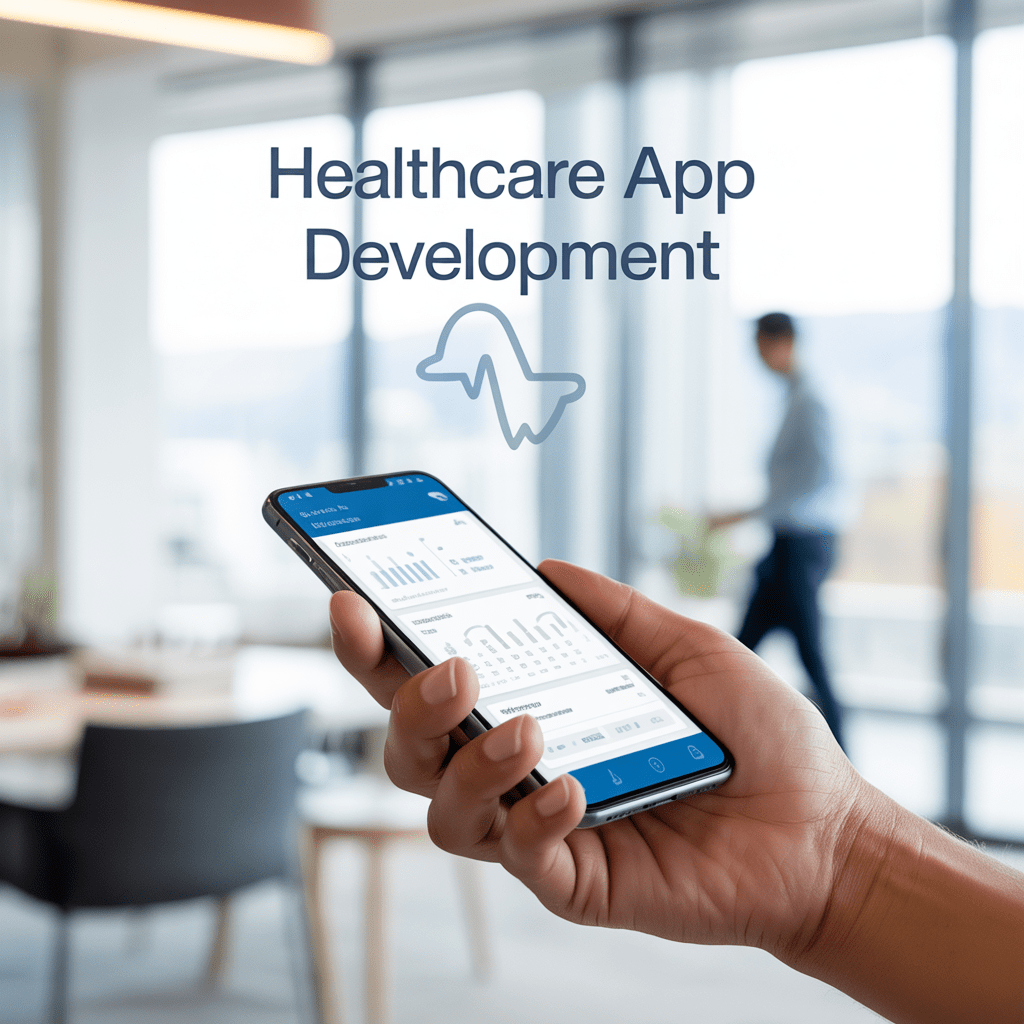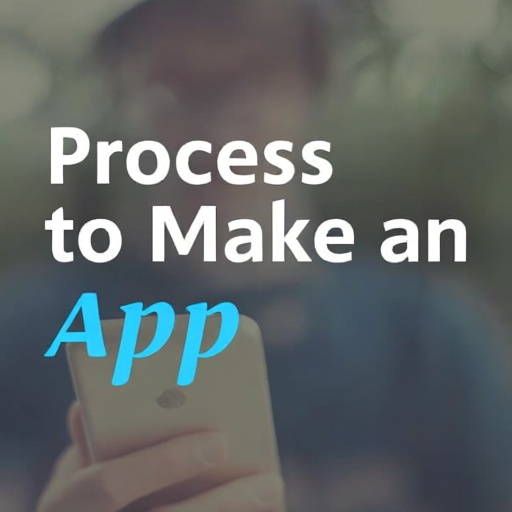In today’s fast-paced digital world, having a grocery mobile app for a Big Mart is no longer just a trend—it’s a necessity. With smartphones in nearly every hand, more and more consumers are choosing to shop online, preferring the convenience of browsing products and making purchases from the comfort of their homes. For Big Mart owners, creating a grocery app is one of the most effective ways to meet the demands of modern consumers and stay competitive in an increasingly digital retail landscape.
A grocery mobile application provides a seamless shopping experience, allowing customers to easily browse, shop, and track their orders. It’s an essential tool for enhancing customer engagement, improving accessibility, and ultimately driving sales. Simply put, app development is no longer a luxury—it’s the key to long-term success in retail.

The Digital Transformation in Retail: A Necessity for Grocery Store Owners
The retail industry is undergoing a massive transformation. Gone are the days when people would rely solely on in-store shopping. Today, shopping has become an on-the-go activity, and mobile devices have become a vital tool for consumers. According to a report by Statista, mobile shopping is projected to grow significantly in the coming years, highlighting the need for businesses to embrace mobile app technology.
For grocery store owners, this shift presents both challenges and opportunities. To stay ahead, they need a mobile app that not only caters to customers’ needs for online shopping but also integrates seamlessly with in-store experiences. Let’s dive deeper into why developing an app is essential for Big Marts today.
Why Grocery Mart Owners Need a Mobile App in the Digital Era
1. Meeting Customer Expectations
Consumers today expect instant access to products and services. With the rise of e-commerce giants, shoppers are accustomed to the ease and convenience of browsing and buying products online. Whether they’re looking for groceries, electronics, or household items, they want the ability to shop from home or on the go—anytime, anywhere.
This shift in consumer behavior means that mart owners must evolve or risk being left behind. A mobile app can cater to this demand by offering an intuitive, easy-to-navigate platform where customers can quickly find and purchase products.
2. Increased Customer Engagement
A mobile app provides store owners with an opportunity to engage customers more effectively. Through push notifications, in-app messages, and loyalty programs, marts can remind customers about ongoing promotions, discounts, and new product launches. It also allows businesses to offer personalized deals based on customers’ shopping habits and preferences.
Additionally, an app helps collect valuable customer data, which can be used to create tailored marketing campaigns. This data-driven approach strengthens the bond with customers and encourages repeat business, ultimately leading to higher retention rates.
3. Convenience and Accessibility
One of the major benefits of having a grocery mobile app is the convenience it provides customers. People are increasingly relying on their smartphones for various tasks, and shopping is no exception. With an easy-to-use app, customers can browse products, place orders, and manage their accounts whenever they want, without being tied to store hours.
Mobile apps also enhance accessibility for those who may not have the time or ability to visit physical stores. This makes shopping more inclusive and allows Big Marts to reach a broader audience.
4. Improved Operational Efficiency
An effective mobile app not only improves the customer experience but also streamlines a mart’s operations. With an app, retail businesses can automate inventory management, track orders, and handle customer support. For example, a real-time inventory management system ensures customers are aware of product availability, reducing the chances of overstocking or understocking.
Additionally, mobile apps help automate manual tasks like order processing and delivery management, resulting in faster and more efficient operations. This allows mart owners to focus on growing their business while maintaining smooth internal processes.
5. Scalability for Future Growth
As businesses grow, they need solutions that can keep up. A well-developed mobile app is scalable, meaning it can easily handle increasing traffic, a wider range of products, and higher customer demand. It can also incorporate new features like product recommendations, voice search, or augmented reality as the business evolves.
Having a scalable app ensures that Big Marts can continuously meet the needs of their customers without sacrificing app performance or user experience.
Key Features of a Successful Mobile App for Big Marts
For a mobile app to make an impact, it must offer a seamless and engaging user experience. Below are some key features that every Big Mart app should include:
1. User-Friendly UI/UX Design
A well-designed user interface (UI) and user experience (UX) are crucial for the success of any mobile app. The app should be intuitive, allowing users to find products quickly and easily. A clean layout with clear categories and a simple, smooth checkout process will keep users engaged and encourage repeat visits.
2. Personalized Shopping Experience
Customers appreciate personalization. By collecting customer data (with their consent), mart owners can offer personalized product recommendations, promotions, and notifications based on previous purchases. This not only improves the shopping experience but also drives sales by promoting relevant products to each customer.
3. Multiple Payment Options
The app should support multiple payment methods to accommodate different customer preferences. Offering options like credit/debit cards, mobile wallets, and cash on delivery makes it easier for customers to complete their purchases.
4. Real-Time Inventory Updates
Real-time inventory tracking ensures that customers know whether a product is in stock or not. This reduces frustration and prevents abandoned carts. Customers will appreciate the transparency, which also builds trust between the mart and its customers.
5. Order Tracking and Delivery Management
Allowing customers to track their orders in real-time adds an extra layer of convenience. The app should provide updates on the status of the order, including estimated delivery time and any delays. This improves customer satisfaction and ensures a smooth shopping experience.
6. Push Notifications and Alerts
Push notifications are an effective way to keep customers informed about promotions, new arrivals, or special offers. These alerts help maintain customer engagement and remind users to make purchases, increasing sales over time.
Estimated Cost Breakdown of a Grocery Application
The cost of developing a grocery app varies based on features and complexity, typically ranging from $10,000 to $30,000 for basic apps, and up to $70,000 or more for more advanced functionality. Factors such as platform choice, design, and development team location can influence the final price. It’s essential to tailor your budget based on the features and scalability needed for your grocery app.
1. Basic Grocery App
A simple grocery app with essential features like product listings, search functionality, basic cart, and checkout options typically costs between $10,000 to $30,000.
2. Intermediate Grocery App
An app with additional features such as user profiles, order history, push notifications, and multiple payment gateways can range from $30,000 to $70,000.
3. Advanced Grocery App
For a fully-featured app with advanced functionalities like real-time order tracking, AI-based recommendations, loyalty programs, and integration with third-party services, the development cost can exceed $70,000 and may go up to $150,000 or more.
Factors Influencing Development Costs
- Platform Choice: Developing for both iOS and Android increases costs due to the need for separate codebases or a cross-platform framework.
- Design Complexity: Custom designs and user interfaces can add to the development time and cost.
- Features and Functionalities: Advanced features like real-time tracking, AI recommendations, and third-party integrations require more development time and resources.
- Development Team Location: Teams in regions with higher labor costs (e.g., North America, Western Europe) typically charge more than those in regions with lower costs (e.g., South Asia, Eastern Europe).
- Maintenance and Updates: Ongoing maintenance, updates, and server costs should be factored into the overall budget.
Additional Costs to Consider of Grocery App
- App Store Fees: Publishing on platforms like the Apple App Store or Google Play requires a developer account, which has associated fees.
- Backend Infrastructure: Costs for servers, databases, and cloud services to support the app’s backend operations.
- Marketing and Launch: Expenses related to promoting the app and acquiring users.
- Legal and Compliance: Ensuring the app complies with data protection regulations and other legal requirements.
Potential Return on Investment (ROI)
What can be a potential ROI of Grocery App?
- Increased Sales: Providing customers with a convenient shopping experience can boost sales and customer loyalty.
- Wider Reach: An app allows you to reach customers beyond your physical store’s location.
- Operational Efficiency: Automation of processes like inventory management and order tracking can reduce operational costs.
Conclusion: Building a Future-Ready Retail Business
In today’s digital age, having a mobile app is not just a luxury for big marts—it’s a necessity. A well-designed app improves customer convenience, boosts engagement, and helps mart owners run their business more efficiently. By offering a seamless, intuitive, and scalable mobile app, big marts can better meet the needs of modern consumers and stay competitive in an increasingly tech-driven retail market.
Investing in app development positions big marts for long-term growth and success, allowing them to create a personalized shopping experience that customers will love and keep coming back for.
Case Study: The Transformation of MartX
To illustrate the power of mobile app development, let’s look at a case study of MartX, a fictional big mart chain that decided to invest in a mobile app. Prior to launching the app, MartX relied solely on in-store shopping and had a limited online presence. As a result, they experienced stagnant growth and struggled to keep up with the digital retail revolution.
After launching their mobile app, MartX saw a dramatic increase in both traffic and revenue:
- Monthly Traffic: Increased by 45%, with a significant jump in mobile visits.
- Sales Revenue: Increased by 60%, largely due to the convenience of mobile shopping and the personalized offers sent via push notifications.
- Customer Retention: Improved by 35%, as the app’s loyalty program and personalized recommendations helped keep customers engaged.
- Average Order Value: Increased by 25% due to product recommendations and ease of purchase.
By embracing app development, MartX was able to grow its customer base, boost sales, and position itself as a modern, tech-savvy retailer ready to compete in the digital age.
This case study underscores the significant impact a well-designed mobile app can have on a big mart’s success. With the right features and functionality, mobile apps are more than just a tool—they’re a powerful driver of business growth.







